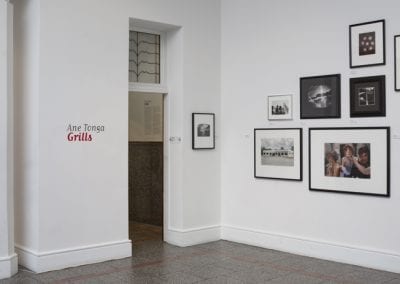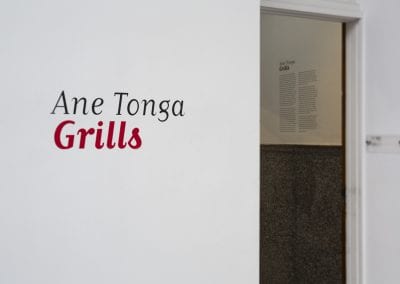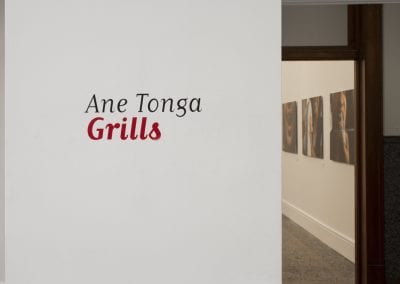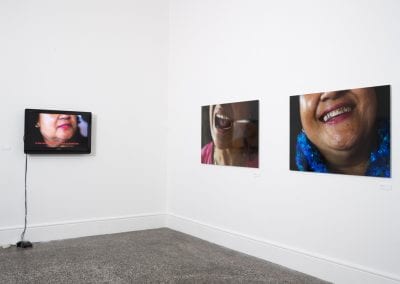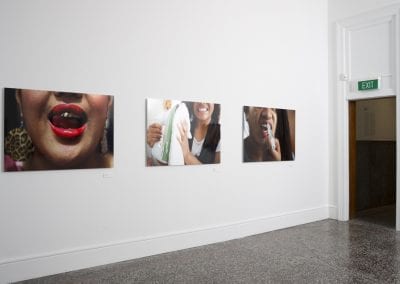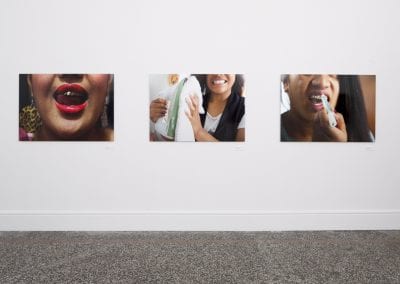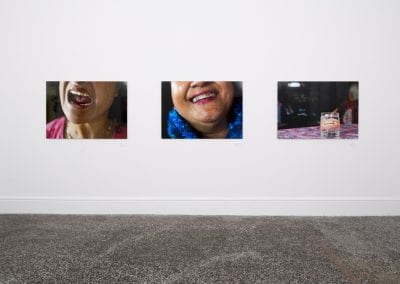Ane Tonga: Grills
30 May – 28 June 2014
Grills are gold covers or caps on teeth that have a long history and are found in many societies and subcultures. In Tonga they are a fairly new and now popular form of cosmetic adornment. Immediately, Ane Tonga’s large, close-up photographs document this practice, which also connects with ideas about beauty, in particular the interface between Tongan and Euro-American conceptions of the beautiful. What we see, occupying most of the picture space, are the lower parts of women’s faces, focused principally on the gold teeth, mouth and lips. The Tongan term for gold teeth is nifo koula, and the gold often comes from second hand or family jewellery. Thus, for Tongan people, layers of genealogy and memory are embodied by these grills.
These photographs, though, are more than documents. They are rich in associations and evocations that are not specific to Tonga, but trans-ethnic and transnational. The use of gold, both malleable and long-lasting, for dental repair work dates back to Antiquity. And gold, in terms of aesthetic enhancement and as a mark of social status and wealth, continues to have a vigorous life in cosmetic dentistry, especially in Eastern Europe and the countries that once made up the USSR. In the Americas, grills and gold teeth are now more associated with fashion and hip hop, though in the twentieth century they could signify the in-your-face criminality of the bearer. Yet, in the mid 19th century a gold tooth could be the identifier of a freed African-American, a former slave. That is, gold teeth have participated in a diversity of cultural and historical conversations.
As art Ane Tonga’s photographs of teeth, mouths and lower faces are powerful and compelling. They are both intimate, almost too close, and strange and distant. This duality and ambiguity brings to mind other close-up visual images of parts of heads and faces – Man Ray’s paintings and photographs of lips (notably Lee Miller’s), and Surrealist pictures of ears, for example. And the author’s photograph of a character in American writer, Michael Greenberg’s Beg, Borrow, Steal: A Writer’s Life (2010) ‘is an extreme close-up of Zebra’s teeth and gums, a homage, he explains, to his late father, who was a dentist’.
These physiognomic fragments of course stand for much more than themselves, and that is so too with Ane Tonga’s photographs. They are at once social documents, metaphors of contemporaneity and interconnectedness, and formally strong and psychologically intriguing images that have entered into a wider world.
– Associate Professor Leonard Bell, The University of Auckland May 2014
Images have been reproduced with permission from the artist.
